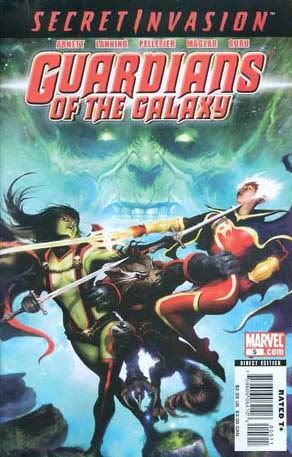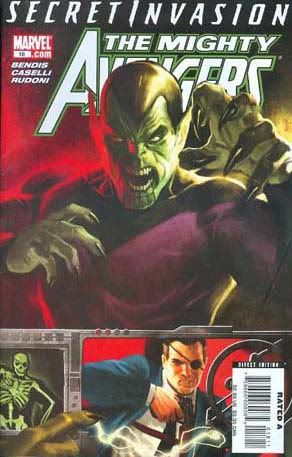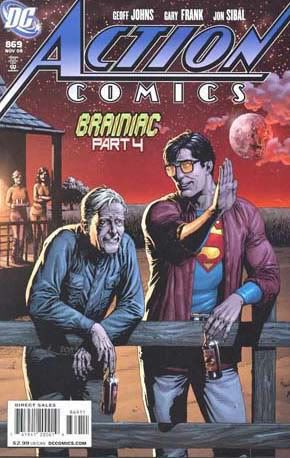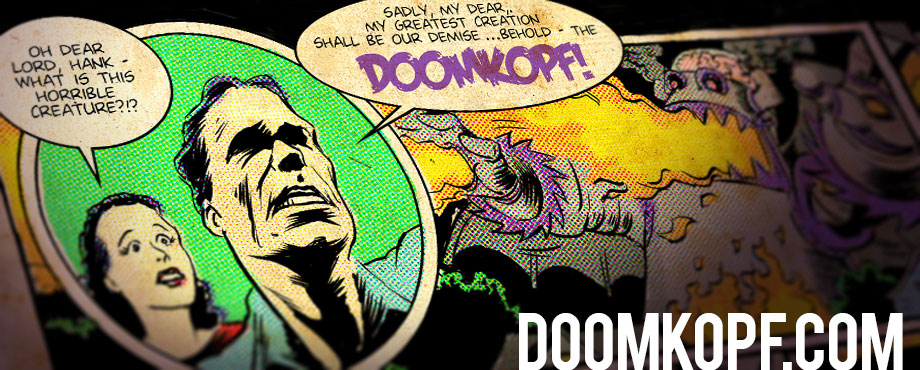The Doomino Effect for Sep 17, 2008
It’s Tuesday. It’s Doomino Effect time.

 Starting off this week is Guardians of the Galaxy #5, one of my favorite series in existence. I moaned last month about Secret Invasion crossing over into GotG, even though the series is so new. Well, the genius known only as “Dan Abnett and Andy Lanning” is managing to make this crossover fit seamlessly into what was already going on, so I don’t mind it as much.
Starting off this week is Guardians of the Galaxy #5, one of my favorite series in existence. I moaned last month about Secret Invasion crossing over into GotG, even though the series is so new. Well, the genius known only as “Dan Abnett and Andy Lanning” is managing to make this crossover fit seamlessly into what was already going on, so I don’t mind it as much.
I just really hate when the big events cross over into books I’m reading and it makes an abrupt change simply for the sake of crossing over, like when World War Hulk made me hate Ghost Rider for two months. But this Skrull business fits right in with a new team in a new setting getting to know each other and the mess they’ve decided to become a part of. Bravo to the creative team for that.
And I raved about it last month, but the art on this book is fantastic. Paul Pelletier and Rick Magyar pull off an attractive blend of realistic proportions and expressive emotions. And there was something about that first panel on page 4, where Drax is in mid-drop from the ceiling, that struck me as an amazing depiction of bodies in motion. I was reading this and remember thinking “Man … that’s a still drawing, but I can just totally feel the movement in it.” It may just sound like I have a crush on page 4 panel 1, but I do.
But why is Drax dropping from ceilings? He’s taking out EVERYONE, because that’s the only way he’s going to know who the Skrulls are! And by taking out, I mean killing. But we the readers, and Adam Warlock, know that Cosmo the Golden Retriever is actually the Skrull. So Drax wants to destroy the place, the Skrulls probably want to destroy the place, and then we find out Starhawk (now female) wants to destroy the place too.
This is one of those books where I’m totally content not knowing what’s going on. Starhawk’s rambling about Major Victory smelling “of dead universes” just sounds awesome. Whatever is dictating that “it is far too early in this era for there to be a Guardians of the Galaxy” has me excited. At this point, Major Victory could de-mask and have another Jim Valentino mullet and I think I would still be loving this book.

 Speaking of loving something while not knowing what’s going on, that leads me to Mighty Avengers #18, when I think the opposite is happening. This issue continues the pattern of Avengers books filling in Secret Invasion backstory. However, it is now to the point where the backstory is starting to become irrelevant, and it’s as if Marvel just feels obligated to tell us everything that happened prior to the invasion.
Speaking of loving something while not knowing what’s going on, that leads me to Mighty Avengers #18, when I think the opposite is happening. This issue continues the pattern of Avengers books filling in Secret Invasion backstory. However, it is now to the point where the backstory is starting to become irrelevant, and it’s as if Marvel just feels obligated to tell us everything that happened prior to the invasion.
I actually thought this issue was going to be awesome at first, meaning I thought it was going to somehow be worth reading, but I was deceived (other than Stefano Caselli’s art, which was a change for this series, but I liked it). Nick Fury tells his new Commandos that Maria Hill is a Skrull, and they need to abduct her and bring her to him — as their first mission. Fury experiences a little backlash from the troops, as kidnapping the director of S.H.I.E.L.D., from S.H.I.E.L.D. no less, comes off as a little beyond their skillset. It kind of seems like it would be all downhill from there, honestly.
But anyway, I was like “Whoa, Hill was a Skrull? Where’s Bendis going with this? Because we saw her tell the Skrulls off in Secret Invasion, so something’s going on…” Well, turns out, it was all just a scam on Fury’s part to test both his troops and Hill, to make sure she followed his advice about the life model decoys.
Now to be fair, this issue was a downer for someone hoping to have any new light shed on Secret Invasion, as flashbacks often can and do; but as an issue about drill sergeant Fury messing with his soldiers to do what he feels has to be done, this was a good stand-alone story. People want to love Nick Fury, but Bendis does a good job of reminding us that Fury isn’t necessarily that good of a guy. He’s just a guy who’s willing to pretty much do anything to win, and we happen to be wishing for the same outcome. I actually just coincidentally re-read Secret War a few days ago, and Fury’s behavior in this issue reminded me a lot of his farewell speech in that series — pretty unlikeable, but well-defined as someone who is not above using other people for his own interpretation of the greater good.
I’m guessing (hoping) that this moral ambiguity will be some kind of fall for Fury, but I’m wondering (fearing) if that’s not what the Secret War fallout was, and that Secret Invasion will be his chance to be the hero again without actually changing or compromising as a human.

 Speaking of becoming more human, that leads me to Action Comics #869 in which Brainiac is just a few seconds away from assimilating Earth culture and destroying the planet like he did to Krypton.
Speaking of becoming more human, that leads me to Action Comics #869 in which Brainiac is just a few seconds away from assimilating Earth culture and destroying the planet like he did to Krypton.
In this issue, we learn that Argo City used some of Brainiac’s technology to build a dome, protecting it from the destruction of Krypton. Brainiac tracked said technology to the city floating in space and integrated it into Kandor, which he bottled up prior to destroying Krypton. So Kara was sent out from floating Argo City, rather than from Krypton.
I’m enjoying this story, and it’s kind of fun watching Geoff Johns get to build the post-Infinite Crisis mythology from his favorite pieces of what has come before, but what was the point of rewriting Superman’s history, the history of Krypton and the history of Supergirl within the past four years if it was just going to be rewritten all over again? I’m going to have to reread some stuff, but blaming Krypton’s destruction on Brainiac seems like it might even contradict what Johns wrote several months ago in his General Zod arc.
And should we care at all about this stuff, considering we know that Crisis events can rewrite history and we’re in the midst of what is undoubtedly the worst-planned Crisis of the three?
If we’re experiencing history reboot after reboot, what is even the point of explaining Brainiac’s earlier post-Crisis appearances? Superman said that the first time he met Brainiac, it was when Brainiac possessed Milton Fine, but Supergirl told him that no one has ever seen the real Brainiac, just probes. So when it comes to Superman himself, DC seems to be restoring as much as possible from the pre-Crisis universe, and history is rewritten in massive swipes; yet when it comes to Brainiac, all of his pre-Crisis history is erased, and Johns attempts to legitimize the lame post-Crisis incarnations of the character?
What I just don’t get is why some history can be erased and rewritten effortlessly, yet Johns apparently feels obligated to explain other details through retconned backstory. I have an idea. Rather than trying to explain the “Brainiac as stage magician” period, why not just erase it like they do with everything else they don’t want to use anymore?

 Speaking of history coming back to bite you, that leads me to Goon #28, which I think actually came out last week. I actually got a fresh copy this time.
Speaking of history coming back to bite you, that leads me to Goon #28, which I think actually came out last week. I actually got a fresh copy this time.
Here’s all you need to know about this issue: the Goon goes around town terrorizing everyone for working for Labrazio, even though he knows they don’t, just so they don’t get any ideas. Throw in some awfully pained attempts at humor by way of donkey prostitution, and you get the worst of The Goon, circa 2006.
However, with Eric Powell’s absolutely stunningly amazing art, and with the undercurrent of The Goon unraveling, you also get the best of The Goon, circa 2005. Where this book shines, it shines brightly. It’s almost such a bright shine that you overlook the blemishes. But when you sit and think about what you just read in that 2 minutes, you remember them again.
